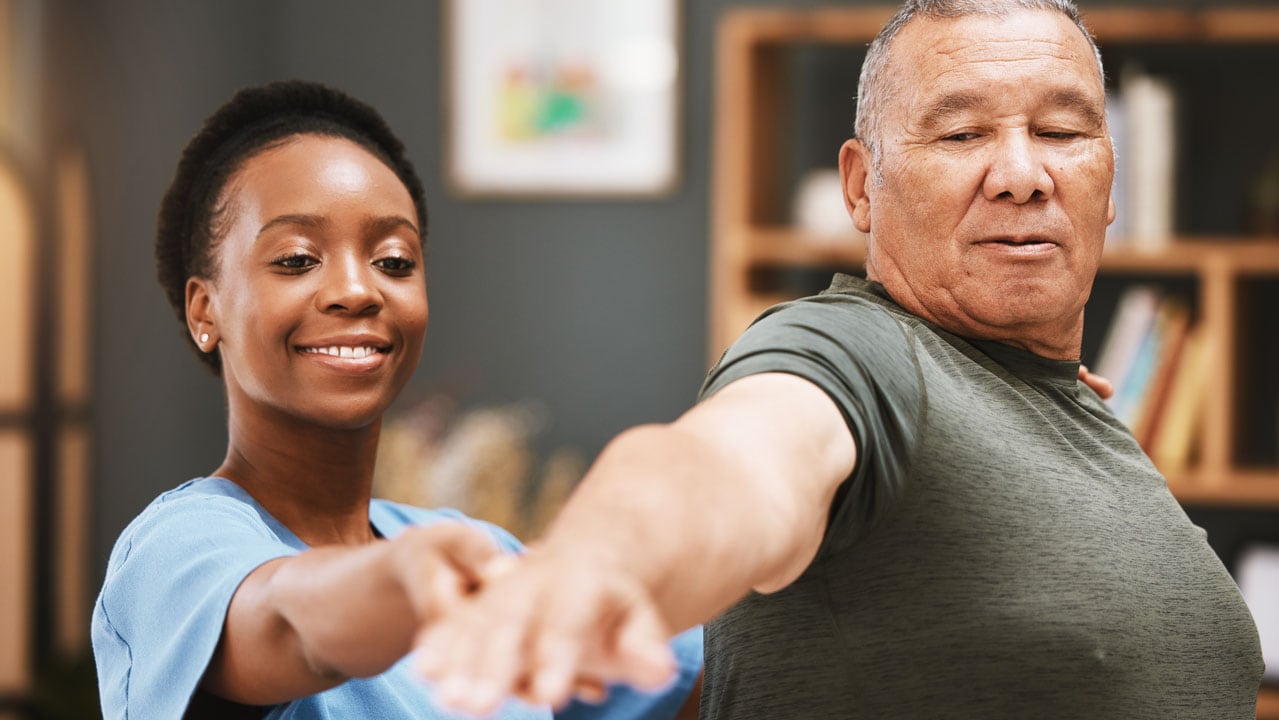Key points
- Osteoarthritis (OA) is the most common type of arthritis.
- It causes joint pain, stiffness, and swelling—usually in the hands, hips, back, or knees.
- There is no cure for OA, but you can effectively manage it.

Overview
Osteoarthritis is a disease that breaks down one or more joints in the body.
- It most commonly affects the hands, hips, back, and knees.
- It can cause pain, stiffness, and swelling in affected joint(s).
- Over time, it can lead to changes in bone, cartilage, and other joint tissues—resulting in disability or making it hard for someone to do work or daily tasks.
OA is common among adults 45 and older. But it is not a regular part of aging.
- There are things you can do to prevent or delay it.
- There are also things you can do to manage it, if you develop it.
Signs and symptoms
People with OA may experience a wide range of symptoms. These can include:
- Joint pain, especially when moving the joint.
- Stiffness after resting a joint.
- Swelling in and around the joint, especially after using it a lot.
- Feeling like the joint is loose or unstable.
- Less ability to move the joint.
Things that increase the risk for OA
Certain things can increase your chances of developing OA. These include:
- Repetitive joint stress or injury—Injuring or over-using a joint can damage it and increase your risk of OA.
- Obesity—Extra weight can affect a person's metabolism and increase the risk of OA, especially in weight-bearing joints like the hips or knees.
- Family history—People who have a family member with OA may be at higher risk of developing it.
- Older age—The chance of developing OA increases as people get older.
- Sex—Women are more likely to develop OA than men, especially after age 50.
Also, people who already have OA in one body part are more likely to develop it in other joints.
Diagnosis
Finding out if you have OA
You should see a health care provider who specializes in arthritis, called a rheumatologist, to find out if you have OA.
A rheumatologist will diagnose OA by doing:
- A physical exam.
- X-rays.
- Lab tests.
- A review of your health history.
Treatment
What you can do
While there is no cure, there are proven ways to manage OA symptoms and reduce pain. For example, ways you can manage your arthritis include:
- Being physically active.
- Keeping a healthy weight.
- Protecting your joints.
- Talking to a health care provider about symptoms and care plans.
- Learning skills to self-manage OA and improve quality of life.
CDC recognizes over 20 physical activity and self-management education programs that can help reduce OA symptoms like pain and disability.

Medical Options for OA
Some adults with OA may need extra assistance from providers to help manage their symptoms. These may include:
- Physical therapy to strengthen muscles around the affected joints.
- Over-the-counter pain relievers or prescription drugs.
- Supportive devices such as crutches or canes.
- Joint replacement surgery if other treatments haven't worked.
- Data from National Health and Nutrition Examination Survey 2017–March 2020.
